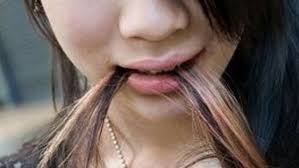Patients with trichophagia are prey to their addiction to eating hair. It is a behavioral disorder that consists of swallowing one’s own hair or someone else’s. Its accumulation in the digestive tract can cause serious disorders due to gastric or intestinal blockage.
Trichotillomania is hair loss from the urge to pull and twist it until it falls out. Patients are unable to stop this behavior, even if their hair thins.
By the time these hairballs are large enough and manage to obstruct the intestinal walls, the doctor or surgeon discovers the disease.
Trichophagia or Rapunzel syndrome: Compulsively eating hair. It is a strange, singular and very rare disorder that results from the ingestion of one’s own hair. It usually develops as a consequence of trichotillomania.
SYMPTOMS:
They present with symptoms of partial obstruction of the outlet of the stomach or intestine:
- Vomiting.
- Diarrhea.
- Stomachache.
- Bleeding or intestinal perforation.
- Weightloss.
- Abdominal tension.
- Constipation.
TREATMENT:
Treatments for trichophagia are usually psychotherapeutic with different psychological therapies. And the use of drugs, it is recommended to go to a professional who evaluates each case and can correct the compulsive therapy.
If left untreated, trichotillomania can lead to hair loss, baldness, missing eyebrows or eyelashes, and skin damage to the follicles.
It is usually treated with a form of cognitive behavioral therapy or CBT (CBT) called habit reversal therapy. This treatment helps patients understand the emotions and situations that lead them to have the urge to pull their hair. In the case of trichobezoars, the treatment of choice will always be surgical, accompanied by psychiatric treatment.
RECOMMENDATIONS:
Touching your hair a lot stimulates the sebaceous glands excessively, which end up producing more sebum. As a consequence, the roots quickly become greasy, the hair quickly becomes dirty or the condition of oily hair worsens.
Hairs removed in this way take 6-8 weeks to grow back. You should not use this hair removal method for larger areas because it can cause hairs buried under the skin or scarring.
Patients tend to hide their bald spots with scarves, hats, caps, or wigs. In some cases, they even avoid social contact until the hair grows back.
https://www.psonrie.com/noticias-psicologia/que-es-la-tricofagia






